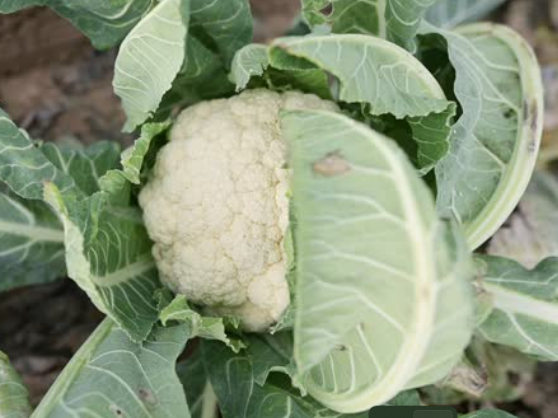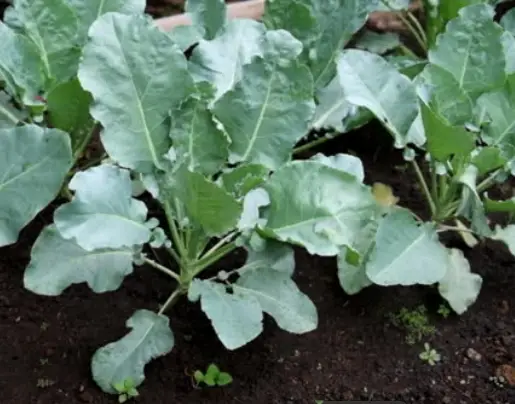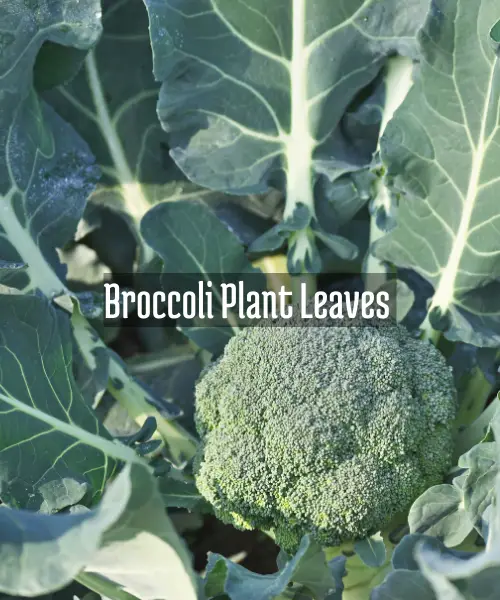When you think of broccoli, you probably just envision the green florets or crowns that most people eat. But did you know that the leaves of the broccoli plant are not only edible but packed with nutrients and flavor?
That’s right, those big leafy greens that most people toss aside or compost have a ton of culinary and health potential.
We will explore the nutritional value, flavor, and edibility of broccoli leaves in this post. We will also go through some advice on how to choose, prepare, and store them. By the end, you could be excited to begin using this neglected plant portion in your dishes!
The Edibility of Broccoli Leaves

Are Broccoli Plant Leaves Edible
Are broccoli leaves safe to eat? The answer is a resounding yes! Both the leaves and stems of the broccoli plant are completely edible.
Broccoli is part of the Brassica vegetable family, which also includes kale, cauliflower, Brussels sprouts, and cabbage. Like the florets we’re more accustomed to eating, the leaves will not cause any ill effects when consumed.
They may be a bit tougher and more fibrous than the flower buds, but they are perfectly safe for human consumption.
In fact, many parts of the world, broccoli leaves are regularly eaten, especially in Indian, Italian, and Asian cuisines. They’ve been part of cultural diets for centuries. It’s only in the United States and some other Western countries that we typically discard them.
The Taste of Broccoli Greens
So if broccoli leaves are edible, how do they taste? In general, they have an earthy, slightly bitter, and nutty flavor, not unlike other leafy greens. Their taste is most similar to their broccoli crown cousins, but with a slightly more pronounced bitter note.
The bitterness of the leaves can vary quite a bit depending on when they are harvested and how they are prepared. Leaves picked later in the season will often be more bitter, while younger spring leaves will be more mild and tender.
Proper cooking methods like blanching, sautéing, or stir-frying can also help mellow any harsh bitter flavors.
Many people find that they quite enjoy the taste of broccoli greens, especially if they are fans of other robust leafy greens like kale, collards, or mustard greens.
They can add a punchy depth of flavor to dishes and stand up well to bold spices, sauces, and other ingredients.
Of course, taste preferences are subjective. If you find the leaves to be unpalatably bitter for your tastes even after cooking, you can mix them with other milder greens, add acidic ingredients like lemon or vinegar to balance the bitterness, or reserve them for recipes where their flavor will be mellowed, such as soups or stir fries.
Broccoli Leaf Nutrition

One of the biggest reasons to give broccoli leaves a try is their impressive nutritional profile. These overlooked greens are absolutely packed with vitamins, minerals, antioxidants, and other beneficial compounds. In fact, they may even outshine the florets in some areas!
Like the crowns, broccoli leaves are an excellent source of:
- Vitamins A, C, and K
- Folate
- Potassium
- Fiber
However, the leaves outpace the florets when it comes to certain nutrients. They contain significantly more:
- Calcium
- Iron
- Vitamin E
- Carotenoid antioxidants like lutein and zeaxanthin
The leaves also provide a good amount of protein for a green vegetable, offering around 4-5 grams per cooked cup. Their varied nutrient density gives broccoli greens anti-inflammatory, antioxidant, and detoxifying properties.
Potential Health Benefits
With such an abundant supply of vitamins, minerals, antioxidants, and other phytonutrients, it’s no surprise that broccoli leaves may provide some impressive health benefits:
Eye Health: The carotenoids lutein and zeaxanthin are concentrated in the leaves and crucial for eye health. They can help prevent age-related macular degeneration and cataracts.
Cancer Prevention: Like the florets, broccoli leaves contain glucosinolates like glucoraphanin, which produce anti-cancer compounds like sulforaphane when broken down. These may protect against various cancers.
Detoxification Support: Glucosinolates and antioxidants in the leaves can enhance detoxification and remove potentially harmful compounds from the body.
Improved Bone Density: The leaves’ calcium, vitamin K, and other nutrients are important for maintaining strong, healthy bones and preventing osteoporosis.
Better Blood Health: Vitamin C, folate, and antioxidants in broccoli greens can promote healthy red blood cell production and prevent anemia.
How to Select and Store
If you’re convinced to give broccoli leaves a try, you may wonder where to find them and how to pick the best ones. You’ll likely be able to find bunches of leaves right alongside the crowns at many grocery stores and farmer’s markets, especially in peak broccoli season.
When selecting leaves, look for ones that are richly green in color without too many yellowing spots. The leaves should be perky and the stems should be firm and moist rather than dried out. Smaller, younger leaves will likely be more tender.
Once home, be sure to store unwashed leaves in a sealed plastic bag or airtight container in the refrigerator. They should keep fresh for around 3-5 days this way.
Ways to Use Broccoli Leaves
Now for the fun part – how to actually cook and eat those delicious broccoli greens! These versatile leaves can be used in all sorts of dishes. Here are some tasty ideas:
- Sautéed/Stir-Fried: This is one of the most common preparations. The leaves hold up nicely to high-heat cooking and pair well with garlic, ginger, soy sauce, sesame, etc.
- Blended into Smoothies/Juices: Toss some leaves into your favorite smoothie or juice blend for a nutritional boost.
- Braised or Added to Soups/Stews: The leaves become delightfully tender and infuse dishes with flavor when braised or added to soups and stews.
- Baked into Frittatas/Omelets: Add some chopped leaves to baked eggs for extra nutrition.
- Raw in Salads: While a bit tough, you can toss some finely chopped leaves into your salad for texture and flavor.
- As a Healthy Chip Alternative: Toss leaves in oil, salt, and bake at 400F until crispy for a nutritious snack.
- In Pesto or Chimichurri: Use the leaves to make vibrant, earthy pestos or herb sauces.
- On Sandwiches and Burgers: Add a handful of leaves to your favorite hand-held meal for crunch and nutrients.
So don’t let those broccoli leaves go to waste any longer! This unsung hero of the broccoli plant is fully edible, loaded with health benefits, and can enhance all sorts of dishes with its unique flavor. Your compost bin will have to find another source of green matter.




